11 Types Of Wildflowers That Will Grow In Your Zone + Growing Guides

This post follows our research editorial guidelines.

Roses, tulips, sunflowers, and other popular garden flowers are great, but I enjoy wildflowers just the same. Wildflowers come in all shapes and sizes and various colors. Some wild weeds native to different regions around the world create a vibrant aesthetic, while others I introduce to improve my soil.

Other than presenting great color and texture in your yard, wildflowers are easier to grow than regular garden flower varieties. Wildflowers are better adapted to their native environment, have evolved to tackle the elements and local threats naturally, and are pretty sturdy plants that don’t need too much looking after.
On that note, here are 11 of my favorite wildflowers for you to grow this year along with a handy growing guide for each one so you know if it will survive your unique climate or not.

Quickly Find The Wildflower You’re Looking For:
1. New England Aster (Symphyotrichum novae-angliae)

The New England Aster is a low-maintenance wildflower with light purple and pink flowers. The petals are thin and nearly sword-shaped, with a golden brown and slightly yellow center.
They provide a hedge of colorful flowers covering the top layer when fully grown. Perfect for any North Eastern wildflower garden you may want to grow.
| Botanical Name: | Symphyotrichum novae-angliae |
| Growth Rate: | Fast |
| Native Range: | North Eastern United States |
| Hardiness Zones: | 3-8 |
| Soil Needs: | Clay, sand, well-draining soil |
| Exposure: | Full sun |
| Blooming Period: | Long (May-October) |
2. Yarrow (Achillea millefolium)
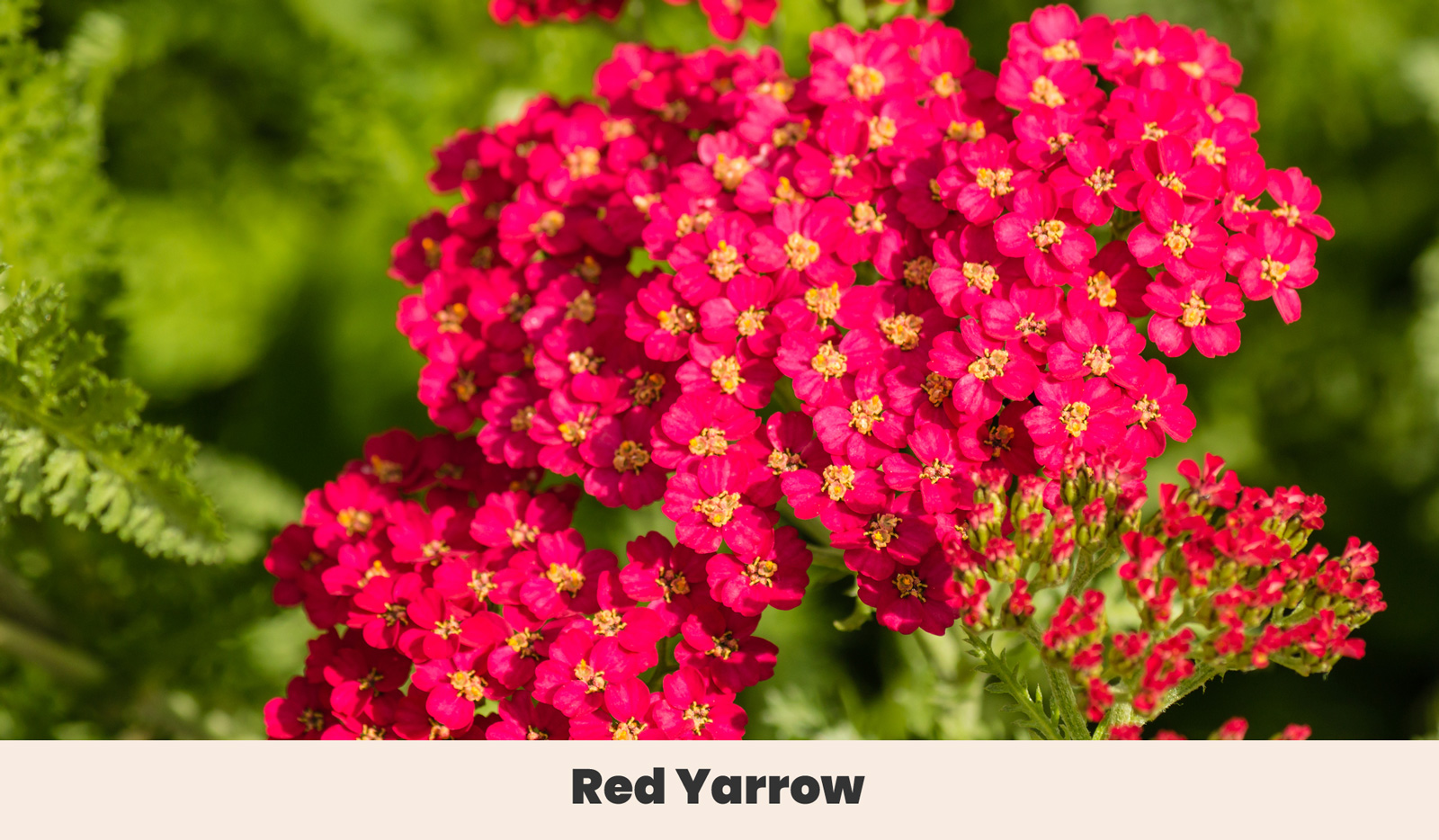
The yarrow is a tough little plant with fantastic visual appeal and fragrance. When properly grown, it adds a snow-like texture to the garden with its small, tightly packed petals. Prune to get even denser plant growth.
When most people think of growing Yarrow their minds drift to the common yellow or white wildflowers. I personally prefer the vibrance of the red perennial Yarrow, let it be an unexpected beauty of your wildflower garden.
| Botanical Name: | Achillea millefolium |
| Growth Rate: | Fast |
| Native Range: | Europe and Western Asia |
| Hardiness Zones: | 3-9 |
| Soil Needs: | High organic matter, loam, sand |
| Exposure: | Full sun to light shade |
| Blooming Period: | Medium (June-August) |
3. Black-Eyed Susan (Rudbeckia Hirta)
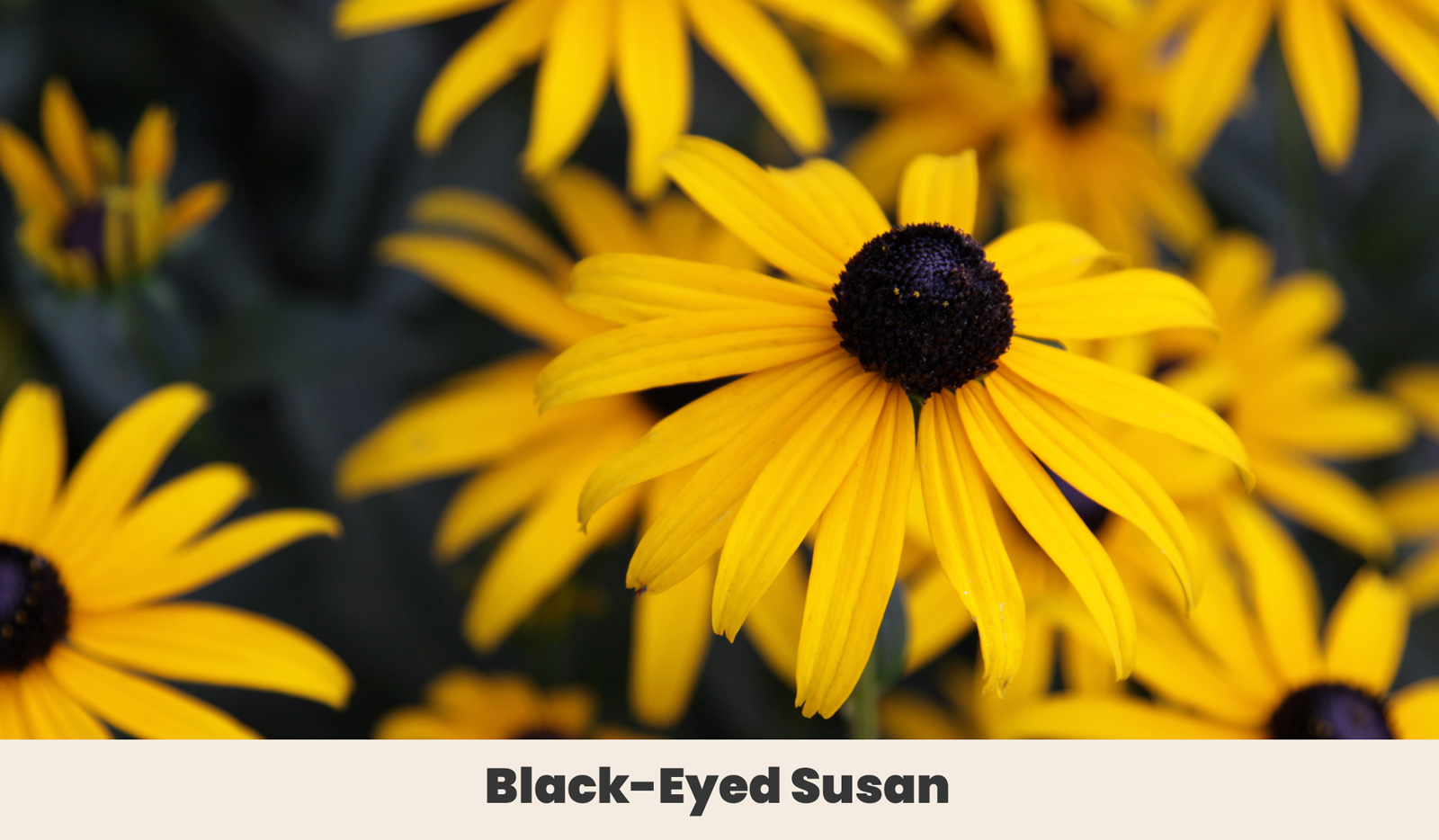
If you have a tight space, go for these bright, Daisy-like flowers. The Black-eyed Susan looks like supersized daisies with a hint of sunflower and a slightly less dense petal count. The chocolate brown cone in the center adds a great touch.
Enjoy Black-Eyed Susans in full bloom all year long as their petals last up until fall in most growing regions.
| Botanical Name: | Rudbeckia Hirta |
| Growth Rate: | Fast |
| Native Range: | North America |
| Hardiness Zones: | 3-9 |
| Soil Needs: | Well-draining soil |
| Exposure: | Full sun to light shade |
| Blooming Period: | Medium (June-August) |
4. Scarlet Bee Balm (Monarda didyma)

The Scarlet Bee Balm is a great plant to cover larger areas. It develops thick foliage with flowers growing atop tall thin stems. As the name suggests the Scarlet Bee Balm is an attractive option for pollinators like hummingbirds and bees.
Scarlet Bee Balm will start blooming before summer and will flower all the way into September.
| Botanical Name: | Monarda didyma |
| Growth Rate: | Moderate |
| Native Range: | North America |
| Hardiness Zones: | 4-9 |
| Soil Needs: | Loam, well-draining soil |
| Exposure: | Full sun to partial shade |
| Blooming Period: | Medium (June-August) |
5. Purple Coneflower (Echinacea purpurea)
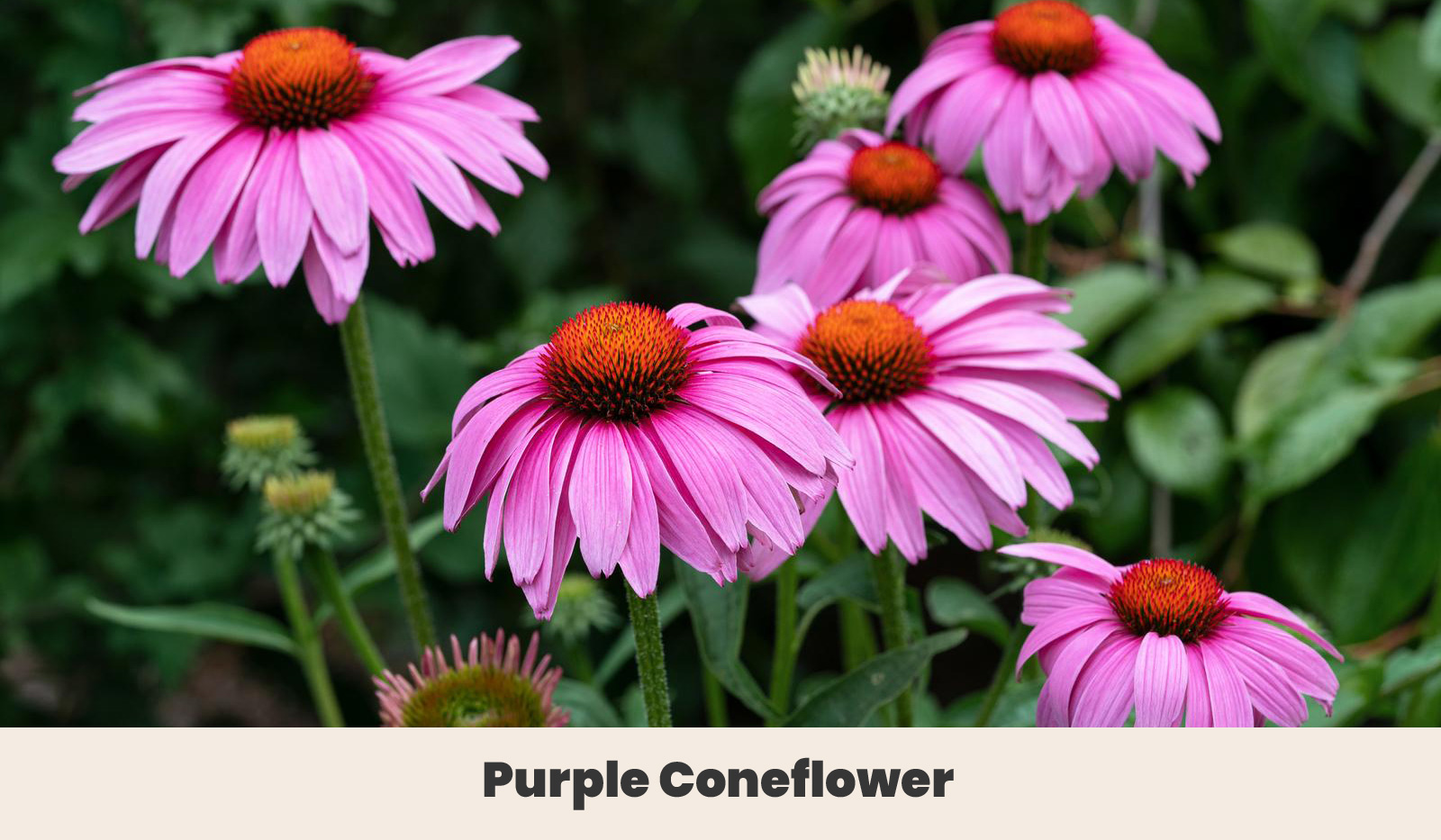
The Purple Coneflower is part of the daisy family but has light purple and nearly pink petals with a chocolate brown cone. If you are a fan of the daisy shape but want something more unique than the regular yellow daisy, opt for this.
| Botanical Name: | Echinacea Purpurea |
| Growth Rate: | Moderate |
| Native Range: | North America |
| Hardiness Zones: | 3-9 |
| Soil Needs: | Loam, clay, sand |
| Exposure: | Full sun to light shade |
| Blooming Period: | Medium (June-August) |
6. California Poppy (Eschscholzia californica)

The California Poppy has been part of folklore for centuries. This variety sprouts bright orange flowers making it stand out in any background.
California Poppies are well-equipped to handle a variety of soil conditions and are one of the few orange flowers that can thrive in a drought. Plant these poppies for good luck when you’re feeling superstitious.
| Botanical Name: | Eschscholzia californica |
| Growth Rate: | Fast |
| Native Range: | California (USA) |
| Hardiness Zones: | 8-10 |
| Soil Needs: | Well-draining soil, loam, sand |
| Exposure: | Full sun |
| Blooming Period: | Medium (June-August) |
7. Shasta Daisy (Leucanthemum × superbum)
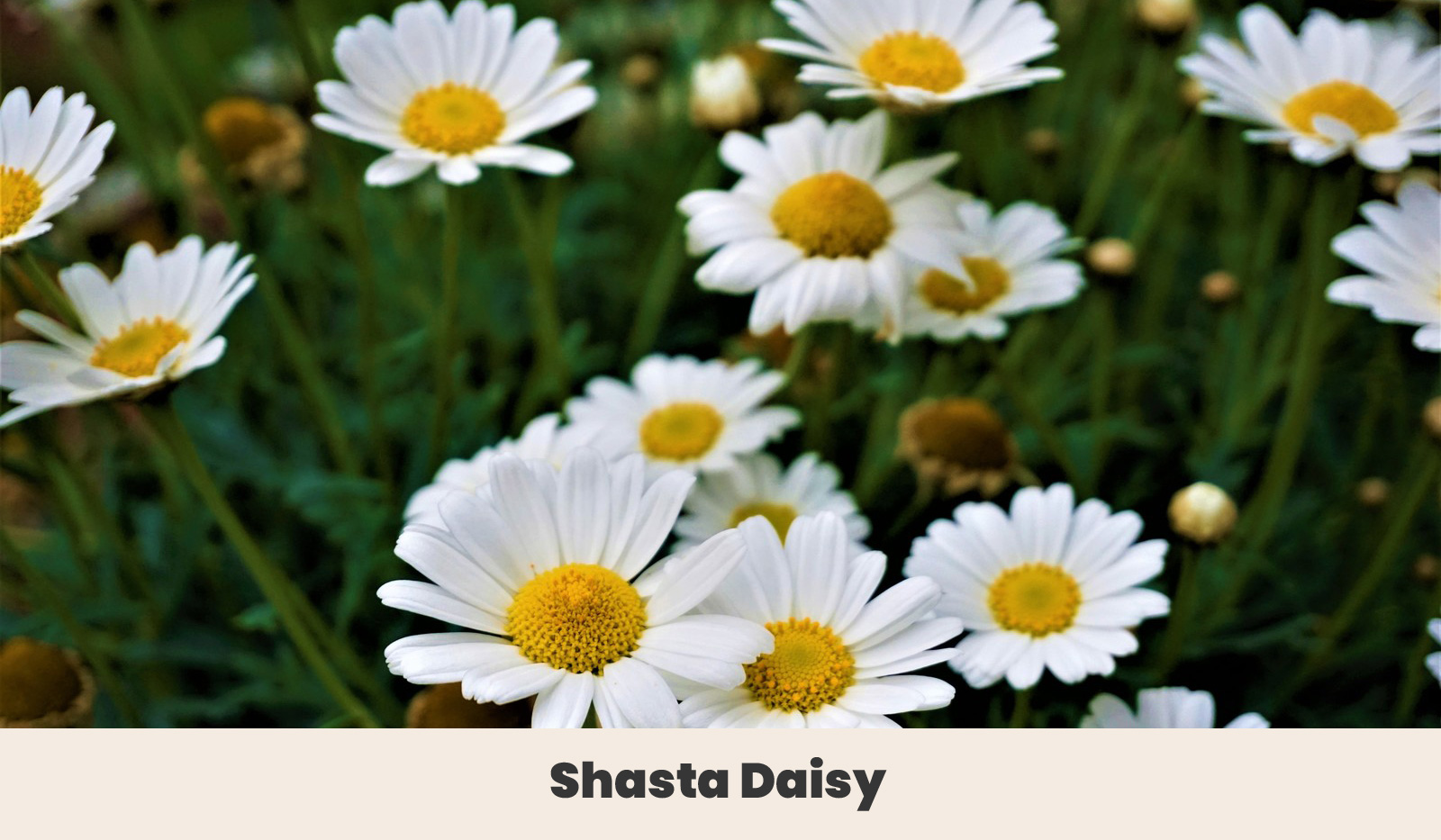
The Shasta Daisy is a classic perennial flower that will give you bright yellow blooms with white petals all throughout the summer. If you want to add a classic summer vibe to your garden, these are your plants.
Shasta Daisies will grow into a dense group, making them perfect for filling up patches in your garden or adding a pop of color to an existing area.
| Botanical Name: | Leucanthemum × superbum |
| Growth Rate: | Moderate |
| Native Range: | Hybrid plant, not native to any region |
| Hardiness Zones: | 4-9 |
| Soil Needs: | Loam, clay, well-draining soil |
| Exposure: | Full sun to light shade |
| Blooming Period: | medium |
8. Cardinal Flower (lobelia cardinalis)

The Cardinal Flower is a tall plant with a bounty of red tubular flowers. The Cardinal flower will spread tall and wide with a quick growth rate. Hardy from zones 3-9 this perennial will grow well just about anywhere in North America.
Cardinal flowers can grow quite thick, however, so be careful if you have other plants nearby. Planting too close to sensitive flowers could wreak havoc, so pruning regularity should be done each fall.
| Botanical Name: | Lobelia Cardinalis |
| Growth Rate: | Moderate to fast |
| Native Range: | North America |
| Hardiness Zones: | 3-9 |
| Soil Needs: | Moist to wet, rich, well-draining, and high in organic matter |
| Exposure: | Full sun to partial shade |
| Blooming Period: | Short (July-August) |
9. Common dog-violet (Viola riviniana)
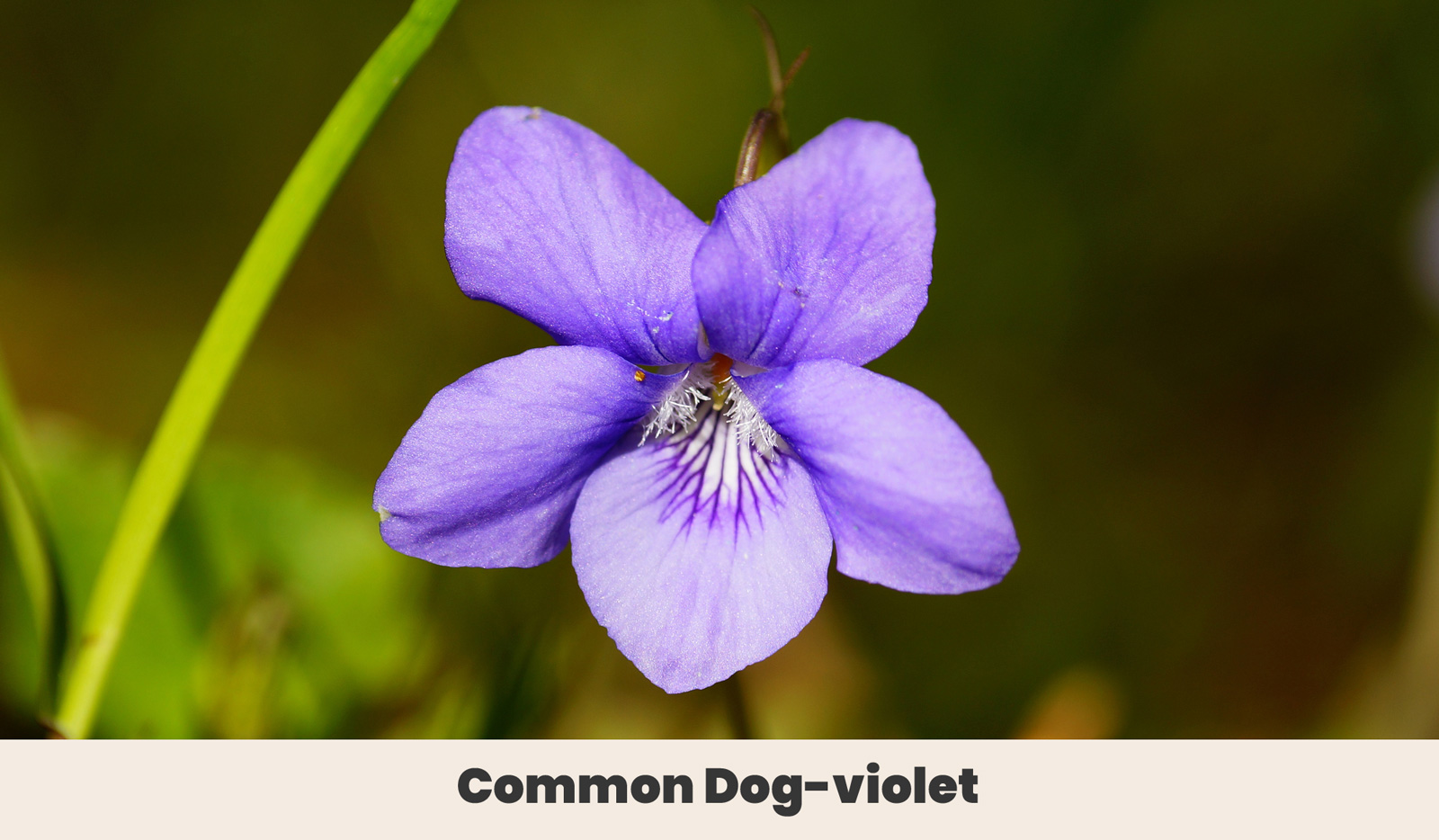
Consider the common Dog Violet if you’re a fan of purple flowers but don’t want a high-maintenance task. Dog Violet is a common purple flowering weed that will grow well in shaded areas that are watered regularly.
Dog Violet can withstand a vast climate spectrum and is ideal for new gardeners or those who don’t have much time to aid in plant growth.
| Botanical Name: | Viola riviniana |
| Growth Rate: | Moderate |
| Native Range: | Europe and Western Asia |
| Hardiness Zones: | 4-8 |
| Soil Needs: | Well-draining soil, loam, sand |
| Exposure: | Partial shade to full shade |
| Blooming Period: | Short (July-August) |
10. Musk mallow (Malva moschata)
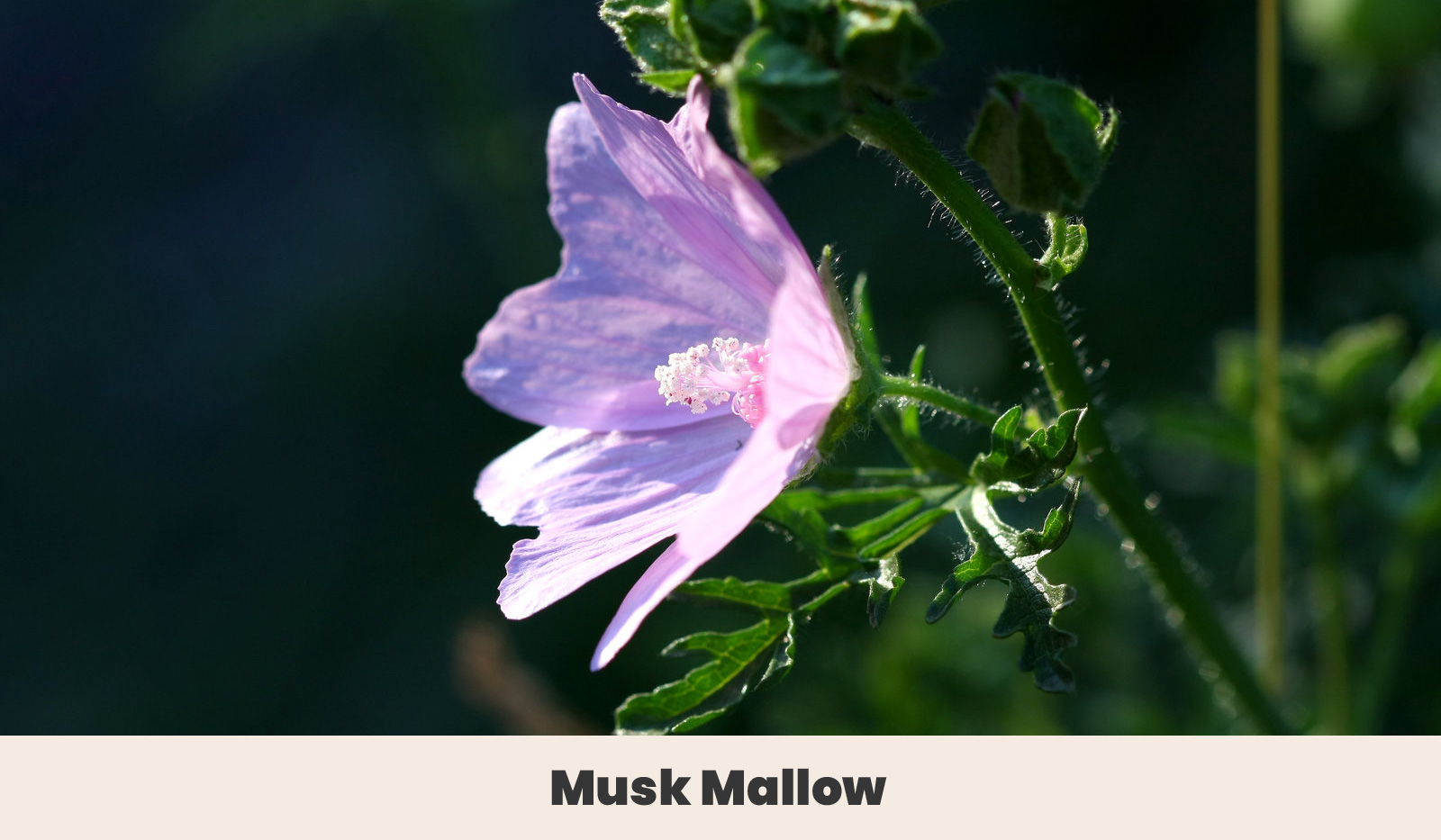
As the name implies, the Musk Mallow flower has a musky scent. If you are a fan of the musk fragrance, this is a flower you will enjoy. If not, you can use this plant sparingly around your garden to add pretty shades of light purple/lavender to the area.
| Botanical Name: | Malva moschata |
| Growth Rate: | Moderate |
| Native Range: | Europe, North Africa, Asia |
| Hardiness Zones: | 3-8 |
| Soil Needs: | Sand, loam, well-draining soil |
| Exposure: | Full sun to partial shade |
| Blooming Period: | Short (July-August) |
11. Cowslip (Primula veris)

The Cowslip is a small perennial plant that gives bright yellow flowers that spruce up an otherwise boarding-green garden. It has a unique structure where the base of the plant is where most of the leaves are, while thin stems extending upwards have yellow flowers at their tips.
The plant’s overall size is relatively small, making it great for tighter spaces.
| Botanical Name: | Primula Veris |
| Growth Rate: | Moderate |
| Native Range: | Europe and Western Asia |
| Hardiness Zones: | 4-8 |
| Soil Needs: | Well-draining, moist soil, clay, loam |
| Exposure: | Partial shade to full sun |
| Blooming Period: | Long (June-September) |
Final Thoughts
I hope you were able to find a flower or two here that was worth adding to your garden plans this year. Growing more wildflower-focused gardens help pollinators thrive with their familiar pollen.
If you need to replant these in the next season or share them with a friend, save the seeds or share through the division of the plant itself. You can encourage better growth through light pruning and adding small amounts of fertilizer where necessary.

Before you go!
11 Weeds With White Flowers + Pictures and Growing Guides (Common Weeds with White Flowers)
10 Blue Flowering Trees + Growing Guide
11 Bell-Shaped Flowers: Your Guide to Breathtaking Blossoms
11 Low Maintenance Flowering Bushes for the Front of Your House